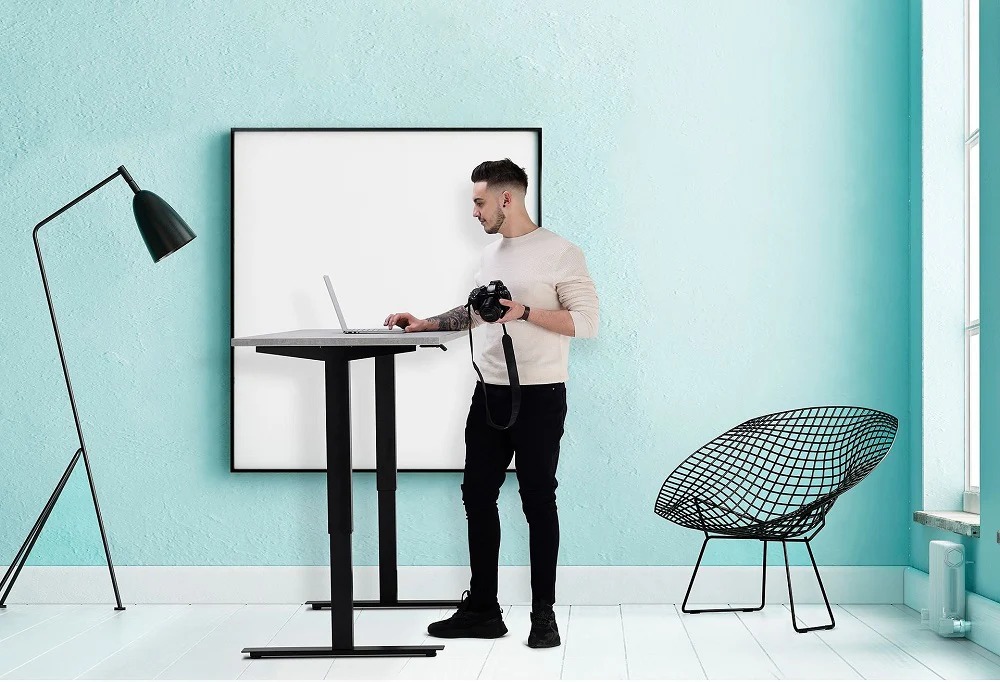A sit stand desk is one of the best investments for productivity, asana and general health in the workplace. But the more it upgrades your office, a common problem arises – messy cables swing everywhere. Poorly managed wires not only look unprofessional, but when you lift and reduce the desktop, it can be complicated, damaged or removed. This is where the proper cable management comes for Sit Stand Desk. This final guide will help you create a clean, organized and safe workpiece that moves with you.
Why Cable Management Matters for Sit Stand Desk Users
An adjustable or standing desk requires a flexible cable route to avoid stress on your wires. Without proper control, the screen cable, power door and charging cable every time you switch between sitting and standing, they can cry or disconnect. Good cable control ensures:
- Safety: Reduces travel hazards and prevents cable damage.
- Aesthetics: Holds its workspace clutter-free and professional.
- Functionality: Smooth desktop allowing movement without disconnections.
Best Cable Management Solutions for Your Sit Stand Desk
- Cable Trays & Under-Desk Baskets : Mount a cable tray under your seat tables to hold power strips, adapters and loose wires. It holds everything outside the floor and in sight.
- Cable Sleeves & Raceways : Combine the cable cable in a single sleeve for the screen, keyboard and a smooth, streamlined appearance. Raceways can route the wires with the desktop legs for a clean vertical orbit.
- Cable Clips & Velcro Straps : Small but powerful, glue clamps place the cable in place, while Velcro strap helps to pack wires at the same time. These are affordable and simple as needed.
- Power Strip Placement : Attach the power strip directly under your desk to move with the desktop. This prevents the plug from getting loose.
Why Sitting All Day Isn’t Great
Let’s start with sitting. Most of us sit for long hours without even realising it. Office workers often sit 8 hours a day — sometimes even more. But is sitting that bad?
What Happens When You Sit Too Long
When you sit for a long time, especially without breaks:
-
Your muscles can get stiff and weak.
-
Your posture may slump, which puts pressure on your neck and back.
-
Blood flow slows down, especially in your legs.
-
Your energy levels drop, making you feel tired or sleepy.
Pro Tips for a Clean and Professional Setup
- Plan the layout before installing. Measure cable lengths ,so they have enough slack when the desk is fully raised.
- Use high quality cables to avoid tangles and clutter.
- Label your wires marked for easy troubleshooting later.
Why Movement Matters Most
When we say “switch between sitting and standing,” we mean: keep moving. Movement boosts blood flow, keeps joints flexible, and muscles strong. Stand during calls, stretch hourly, walk after lunch, or set a timer to switch positions. Make movement part of your daily rhythm—sit, stand, walk, repeat.
Set Up Your Desk the Right Way
Choosing the right desk is important. But so is what you pair it with. A good chair and the way you place your screen, keyboard, and mouse all matter.
If you’re sitting, you need an ergonomic chair. This type of chair supports your back and helps you sit properly. It’s different from regular chairs because it can be adjusted to match your body.
Final Thoughts
A sit stand desk is designed to make your work day healthy and more productive – don’t let the messy cables catch you back. By investing in the right cable control solutions, you will enjoy a field that is organized, efficiently and ready to move when you do.



